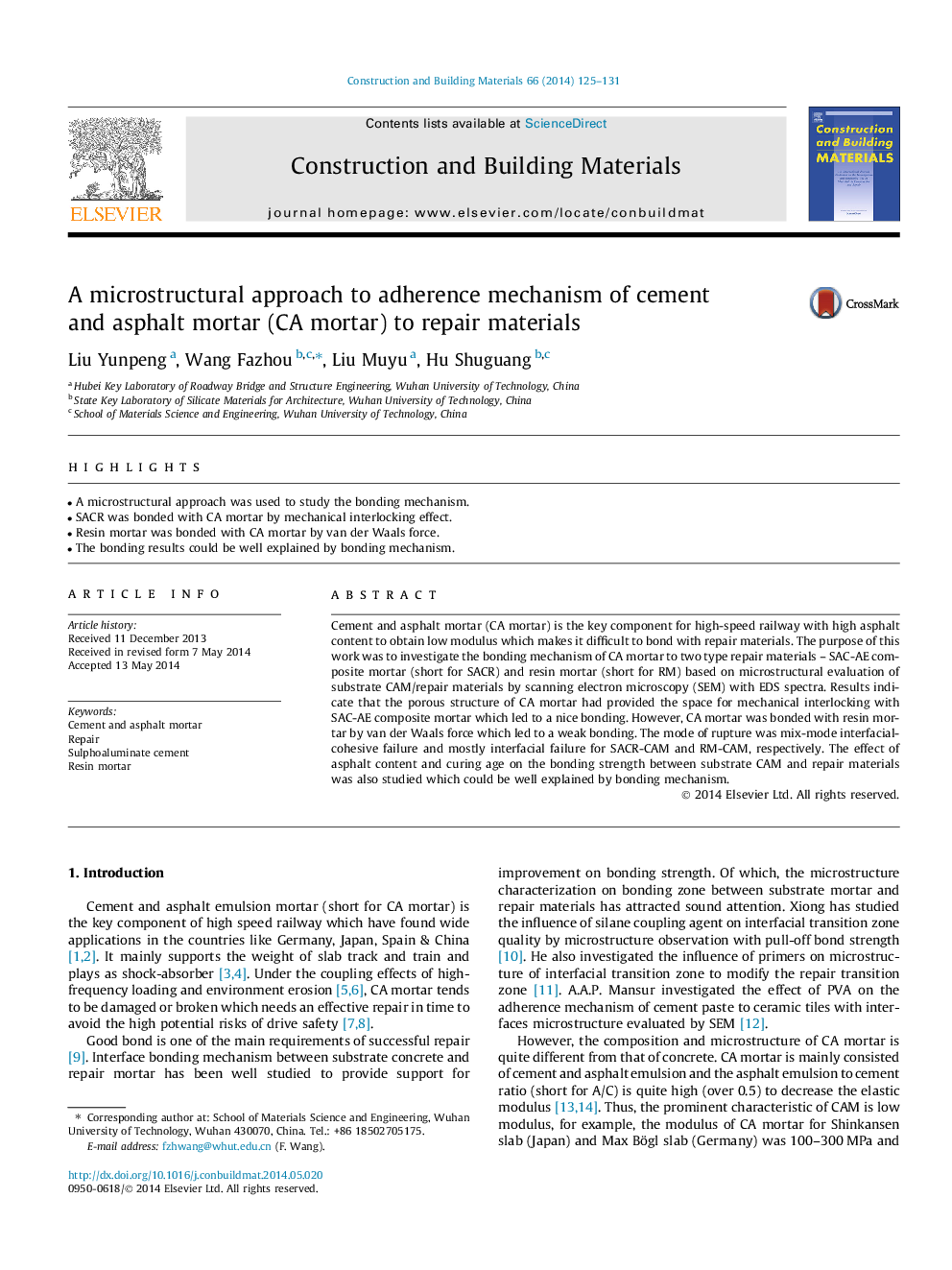| Article ID | Journal | Published Year | Pages | File Type |
|---|---|---|---|---|
| 6722422 | Construction and Building Materials | 2014 | 7 Pages |
Abstract
Cement and asphalt mortar (CA mortar) is the key component for high-speed railway with high asphalt content to obtain low modulus which makes it difficult to bond with repair materials. The purpose of this work was to investigate the bonding mechanism of CA mortar to two type repair materials - SAC-AE composite mortar (short for SACR) and resin mortar (short for RM) based on microstructural evaluation of substrate CAM/repair materials by scanning electron microscopy (SEM) with EDS spectra. Results indicate that the porous structure of CA mortar had provided the space for mechanical interlocking with SAC-AE composite mortar which led to a nice bonding. However, CA mortar was bonded with resin mortar by van der Waals force which led to a weak bonding. The mode of rupture was mix-mode interfacial-cohesive failure and mostly interfacial failure for SACR-CAM and RM-CAM, respectively. The effect of asphalt content and curing age on the bonding strength between substrate CAM and repair materials was also studied which could be well explained by bonding mechanism.
Related Topics
Physical Sciences and Engineering
Engineering
Civil and Structural Engineering
Authors
Liu Yunpeng, Wang Fazhou, Liu Muyu, Hu Shuguang,
